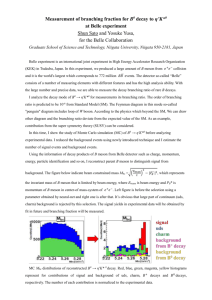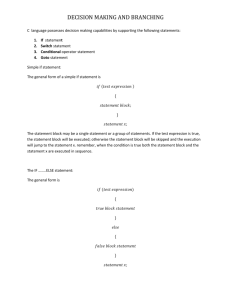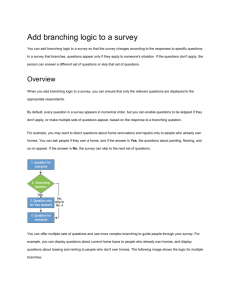Unit 4C - Branching databases
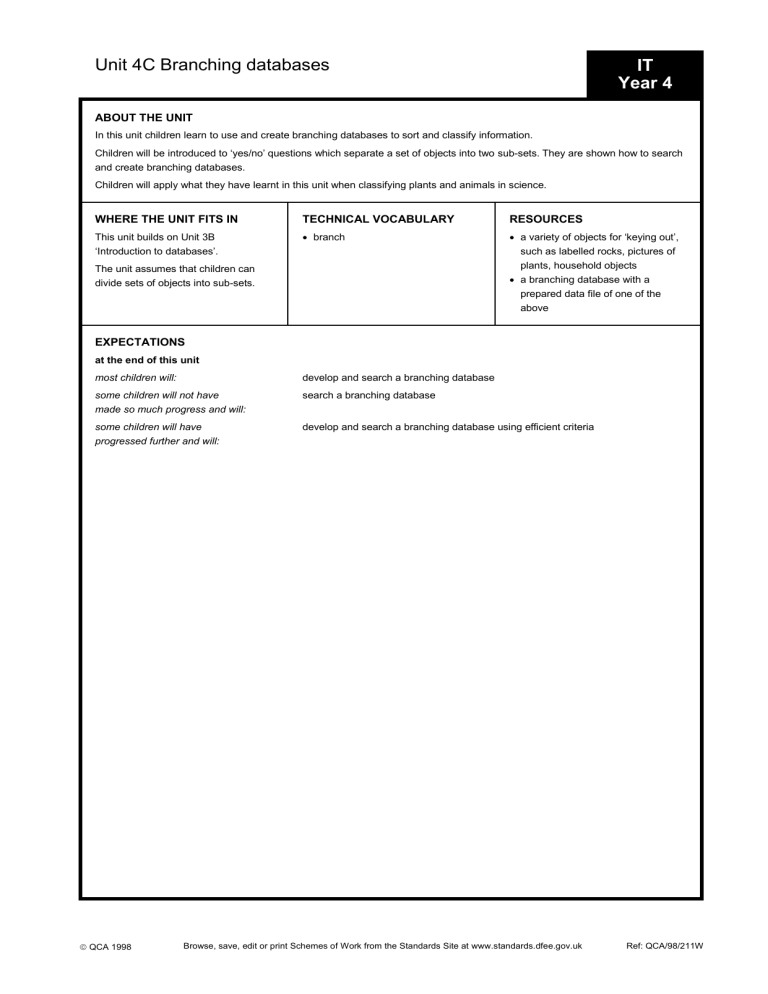
Unit 4C Branching databases IT
Year 4
ABOUT THE UNIT
In this unit children learn to use and create branching databases to sort and classify information.
Children will be introduced to ‘yes/no’ questions which separate a set of objects into two sub-sets. They are shown how to search and create branching databases.
Children will apply what they have learnt in this unit when classifying plants and animals in science.
WHERE THE UNIT FITS IN
This unit builds on Unit 3B
‘Introduction to databases’.
The unit assumes that children can divide sets of objects into sub-sets.
TECHNICAL VOCABULARY
branch
RESOURCES
a variety of objects for ‘keying out’, such as labelled rocks, pictures of plants, household objects
a branching database with a prepared data file of one of the above
EXPECTATIONS
at the end of this unit most children will: some children will not have made so much progress and will: some children will have progressed further and will: develop and search a branching database search a branching database develop and search a branching database using efficient criteria
QCA 1998 Browse, save, edit or print Schemes of Work from the Standards Site at www.standards.dfee.gov.uk Ref: QCA/98/211W
Browse, save, edit or print Schemes of Work from the Standards Site at www.standards.dfee.gov.uk
LEARNING OBJECTIVES
CHILDREN SHOULD LEARN
POSSIBLE TEACHING ACTIVITIES
Primary Schemes of Work: Information Technology Unit 4C Branching databases
LEARNING OUTCOMES
CHILDREN
SETTING THE SCENE
key idea: that ‘yes/no’ questions can be used to divide a set of objects into sub-sets and that a sequence of ‘yes/no’ questions can identify an object
SHORT FOCUSED TASKS
key idea: that a tree diagram can be used to organise information
technique: to search a branching database
Show the class a selection of about 15 similar objects, such as household objects. Tell the class that you are thinking of one of the objects and that they must work out which one it is by asking ‘yes/no’ questions, such as, is it made of plastic? Discuss which questions work well and point out that questions about small numbers of objects are unhelpful if the answer is no. Encourage them to use questions which divide the set of objects into two.
Show the class how to create a tree diagram of branching questions which can be used to identify each object.
Divide the class into groups and give each group a set of eight pictures. Ask them to create a tree diagram that can identify each picture uniquely.
Prepare a branching database of rocks. Show the children how to search the branching database to identify specimens of rock. Give pairs of children a rock specimen and ask them to use the branching database to identify it.
create a series of ‘yes/no’ questions to identify objects
produce a tree diagram to identify objects
search a branching database to identify objects
POINTS TO NOTE
Some children will find it hard not to ask questions such as
‘Does it have a handle or does it have legs?’ Point out that that is really two questions.
Children who find the work hard could cover up or remove objects which have been excluded.
Children who find the work easy could be encouraged to think of questions which will give the answer in less than four steps.
Producing a paperbased branching database or ‘science key’ could make a challenging piece of homework.
Science terminology could be included.
A variety of branching databases could be included.
QCA 1998 1 Ref: QCA/98/211W
Browse, save, edit or print Schemes of Work from the Standards Site at www.standards.dfee.gov.uk
LEARNING OBJECTIVES
CHILDREN SHOULD LEARN
POSSIBLE TEACHING ACTIVITIES
INTEGRATED TASK
to use a branching database to organise, reorganise and analyse information
Demonstrate how to create a branching database. Place various musical instruments in front of the children, and discuss their similarities and differences. Label each instrument with its name as it is discussed. Then ask the children to work in groups to create a branching database that identifies each instrument. Ask each group to test the others’ databases.
Primary Schemes of Work: Information Technology Unit 4C Branching databases
LEARNING OUTCOMES
CHILDREN
POINTS TO NOTE
create a branching database which identifies items uniquely
This activity gives children experience of designing a system for others to use. The activity could be extended by asking children to produce a branching database to identify the children in their class to a visitor.
QCA 1998 2 Ref: QCA/98/211W


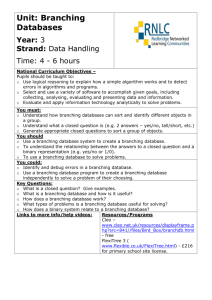
![Branching Out: An Introduction to Family History [pptx , 2.3 MB]](http://s2.studylib.net/store/data/005232376_1-8bb1ea3bff509441ce8b545117622545-300x300.png)
